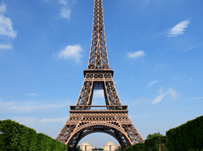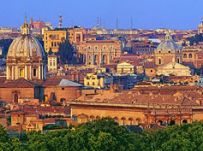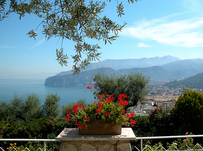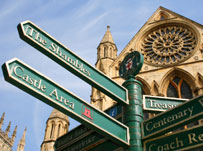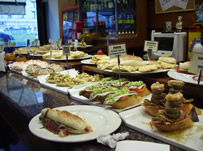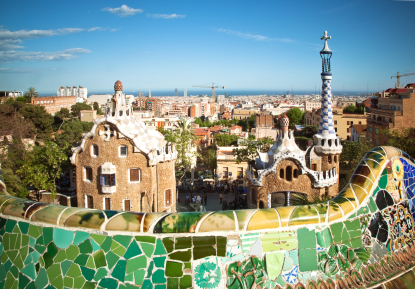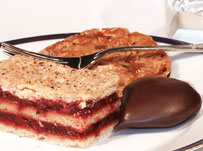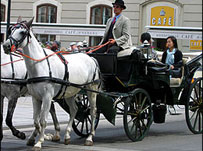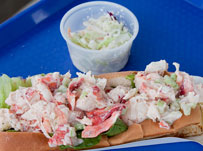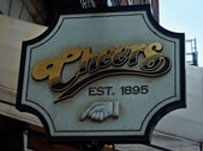Why choose Montreal as your French study destination?
Located in Canada’s eastern province of Quebec, Montreal is the largest French-speaking city outside of Paris. It has gained a reputation as a hugely diverse and vibrant city with an energy and liberalism that makes it a brilliant place to live, or visit.
It doesn’t stop there though; there are lots of other factors that make Montreal a great choice for taking a French course:
1. Huge focus on culture and festivals
These days, Montreal has a reputation as a creative and cultural city with an arts scene that is second-to-none. The huge array of nationalities in Montreal has turned it into a real melting-pot of cultures, with a unique character that is all-embracing and liberal. It’s a city that enjoys the modernity, efficiency and stature of North American hubs, but the joie de vivre and the tradition of European centres.
Throughout the year Montreal plays host to three world-renowned arts festivals – the Jazz Festival in June, the Comedy Festival in July and the Film Festival in September, although all year round you’ll find a range of cultural events to enjoy.
2. Interesting history
It’s often said that a visit to Old Montréal is like going back in time—it’s an open-air museum of French and British architecture dating back centuries.
The city boasts a really interesting history spanning hundreds of years that centred largely around colonisation. Until 1535, Montreal had been inhabited by the Iroquois, but the arrival of French explorer Jacques Cartier spelled the start of a new era. In the early 1600’s, the French colonised the island on which Montreal sits, and the main city (now Montreal) was named Ville Marie.
After the defeat of the French colonists by the British in the 18th century, Montreal was occupied and ‘claimed’ by Great Britain. The British did not expel the French from the island though, and they were able to continue to live there as subjects of the British Empire. Despite being conquered by the British, French Montrealers continued to prosper and by the late 19th century Montreal was the largest city in British North America and the main city of Canada. Annexation of neighbouring towns at the start of the 20th century changed Montreal back to a mostly Francophone city.
Museums to visit in Montreal include the Chateau Ramezay Museum, a former governor’s residence where you can learn about the history of Montréal and Québec, and the Centre d’Exposition La Prison-des-Patriotes, which recalls the Patriot rebellions of 1837 and 1838.
3. Great restaurants and nightlife
Montreal is famed for its gastronomic offerings, with a huge range of restaurants serving all kinds of food. The region is especially famous for being the main producer region of maple syrup, although you’ll also find cheeses, cold meats and breads in abundance – elements of the Gallic culture that you’d expect to be integral in any western French-speaking region!
As well as the many restaurants and bars in Montreal, you’ll also find endless bars and clubs for evening entertainment. The city’s fun-loving reputation is well-deserved, and you’ll be guaranteed a good night!
4. Stunning scenery
It would be wrong to judge a city solely on aesthetics, but this is an area in which Montreal will definitely not disappoint. Of course, it has the skyscrapers of any North American city, which are not to everyone’s taste, but Montreal’s modern constructions actually earned it the title of UNESCO City of Design in 2006 – the first city in North America to be awarded the accolade.
Away from the modern areas, there are streets of attractive greystone buildings and Victorian mansions, and of course, the beautiful Old Town with its cobblestone streets and 18th- and 19th-century buildings.
In terms of natural features, Montreal is also home to a large number of parks, including the 180 hectare Botanical Garden, and of course, not to be forgotten, Mount Royal. Despite its name, the Mount is actually more like a large hill, and situated immediately north of downtown Montreal.
5. Enviable location and good accessibility
Montreal’s location at the very eastern end of Canada has long made it popular with visitors from both America and Europe. It’s very well served by both North American and European airlines, and in fact, the flight from the UK is only 6-7 hours in length. The city is actually really close to the American border, which means that it’s accessible by car, train and plane from the US.
Although Montreal in itself is well worth a visit, the area around the city is also full of things to see and do. Not too much further north you have top-quality ski resorts such as Tremblant and to the west of the city there’s also stunning Niagara Falls.
6. Bilingualism
Of course, if you take a course to either learn French, or improve your skills, the best option is to do so in a country where that language is spoken. You can practise what you’ve learnt outside of lessons, and will pick up more structures and vocabulary just by listening to the people around you.
That said, for people who are complete beginners, the prospect of immersing yourself in a totally foreign language and culture can be daunting. Whilst the people of Montreal certainly prefer to converse in French, the vast majority are bilingual in French and English, so if you find yourself really stuck, it’ll be nice to know that you can revert to English if absolutely necessary.
Cactus offers a range of French courses in Montreal, including General French, Individual French, Combined French and Intensive French.


